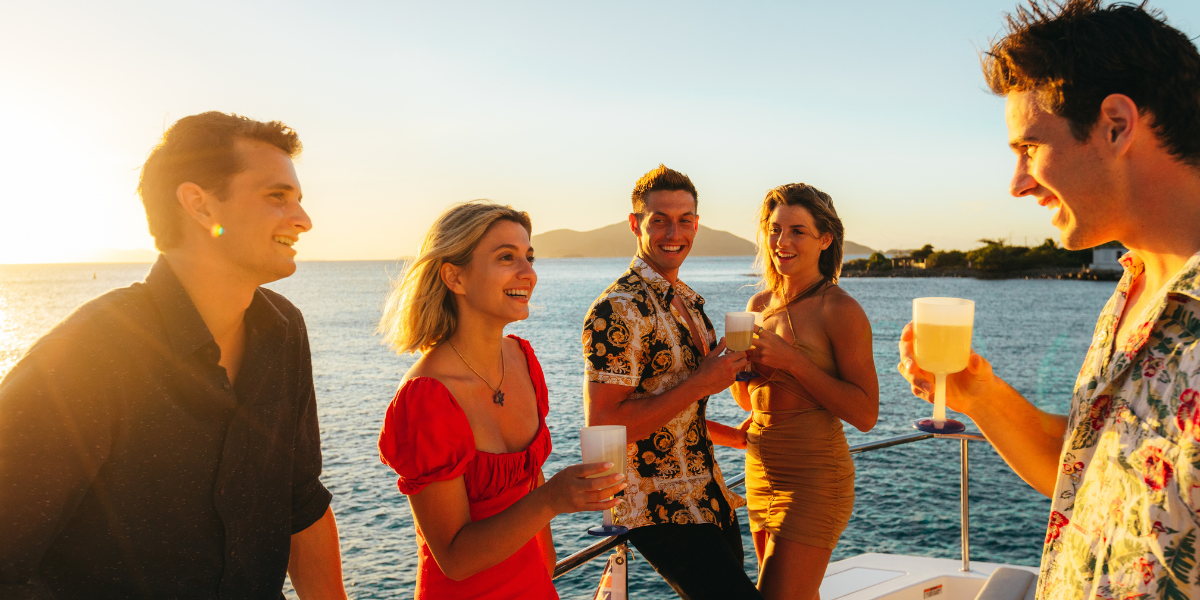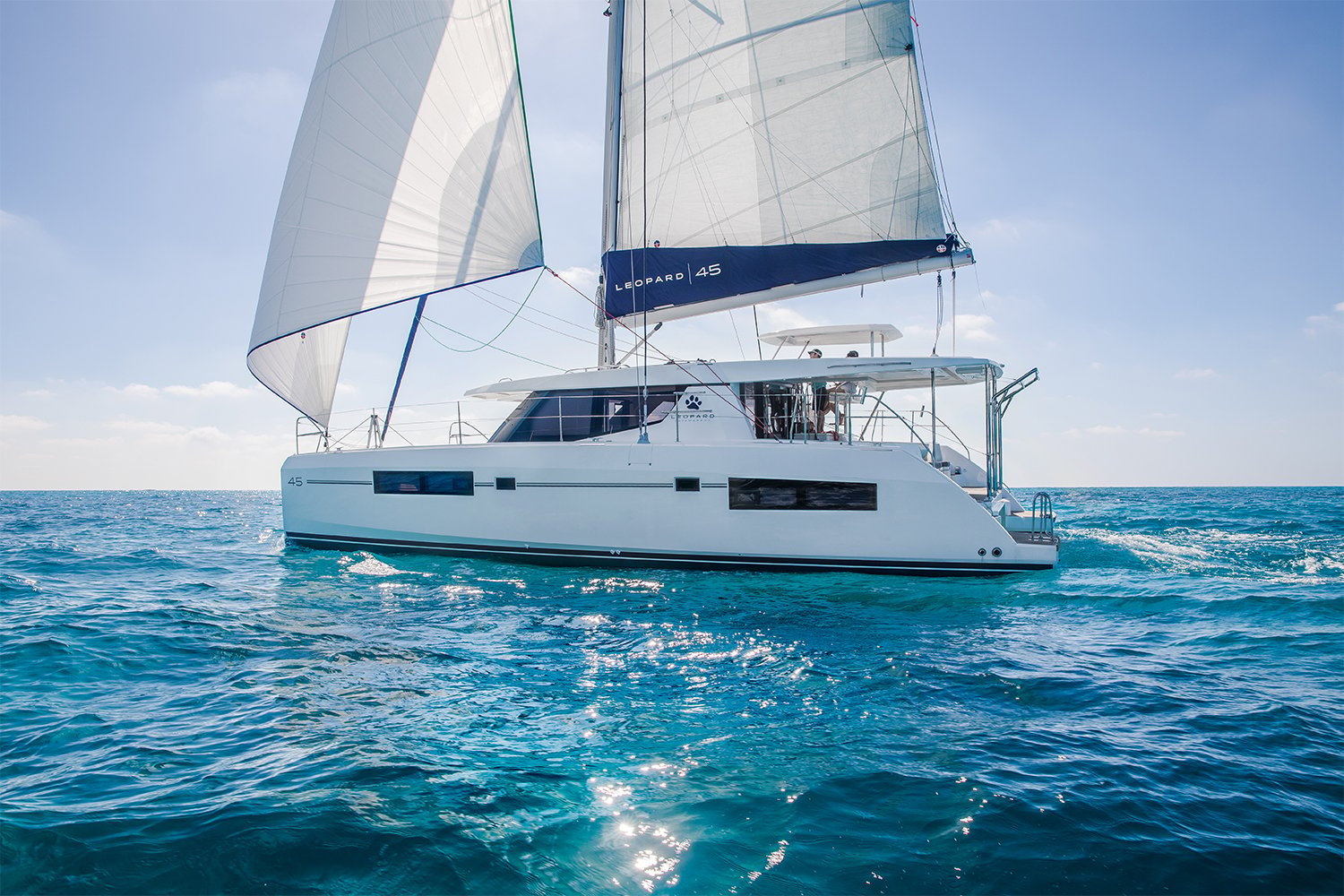The British Virgin Islands is a delightful place to sail. The trips between islands are short and fun, and each island has a different feel and flavor, with beautiful beaches, island bars, and natural beauty everywhere. It's an ideal spot for a charter vacation or to test the waters of Caribbean sailing for the first time.
While sailing in the BVIs is casual and easy, getting your Leopard to the British Virgin Islands is a major passage that requires careful thought and planning.
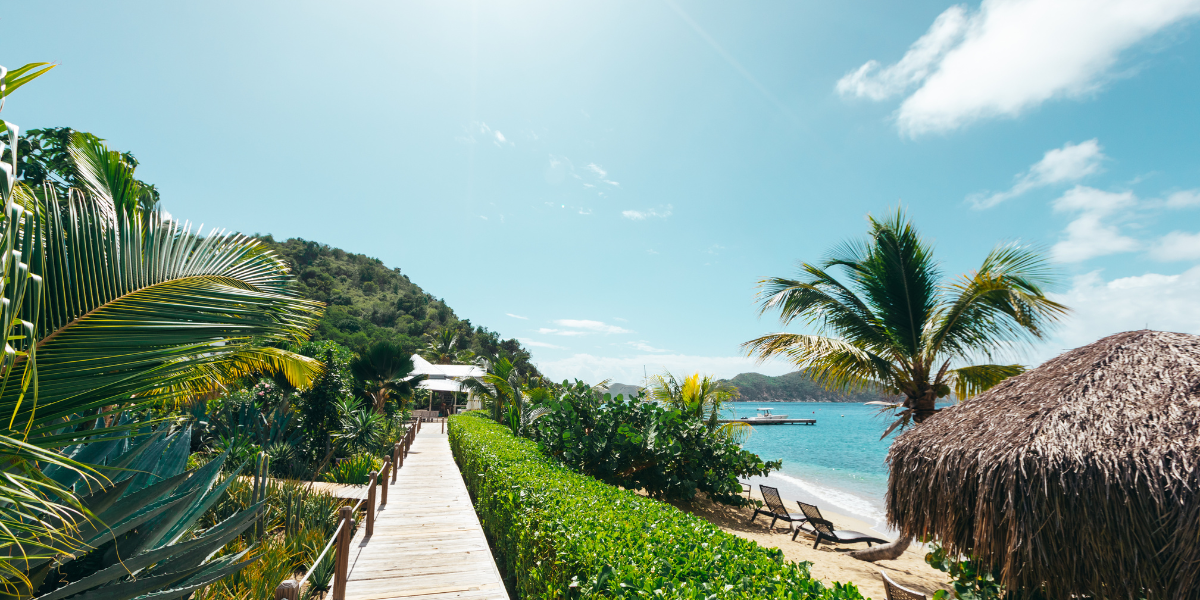
How to Sail
The trade winds and weather set your sailing to the Virgin Islands. The easterly trades blow a constant 15 to 25 knots starting around 28°N, though the exact position varies. Sailing straight into them makes for a long upwind voyage.
From points north of Port St. Lucie, Florida, all the way to New England, most sail east until about longitude 65°W to avoid sailing upwind into the trades. Leaving south of Beaufort, SC may lead to more upwind sailing, as the prevailing winds are easterly.
No matter where you depart, you won't turn straight south until you reach across the trades when you find them. Because of the easterly sailing needed and the contours of the east coast, the total trip length is 1,400 to 1,500 nautical miles, no matter where you depart.
South of Port St. Lucie, the Bahamas lie between the U.S. and the Virgin Islands. From there, most take the “Thorny Path.” This route island-hops through the Bahamas and Turks and Caicos, across the Dominican Republic, and through the Spanish Virgin Islands. Sailing short distances between islands with frequent breaks for weather takes more time. Cruisers often sail days or nights picked for light winds against the trades. They make the Thorny Path part of the destination, with longer stops along the way.
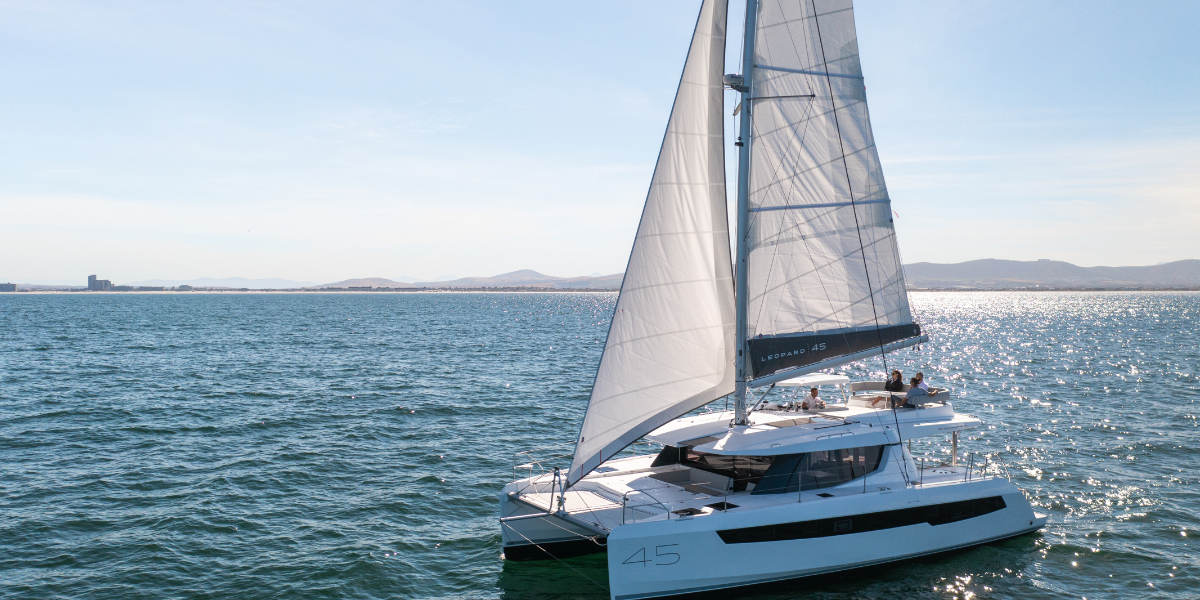
When to Sail
Most sailors make the trip in November for optimal weather. It's all about the weather, so we spoke to expert weather router Chris Parker of the Marine Weather Center to learn why. He breaks the trip down into three main weather stages.
"The first stage is cold fronts and gales. Get out fast and get through them," he says. "Stage two is the high-pressure ridge above the trades. This moves from year to year but has light wind for easting. The last stage is in the trade winds. This is comfortable sailing when you shouldn't be heading east anymore."
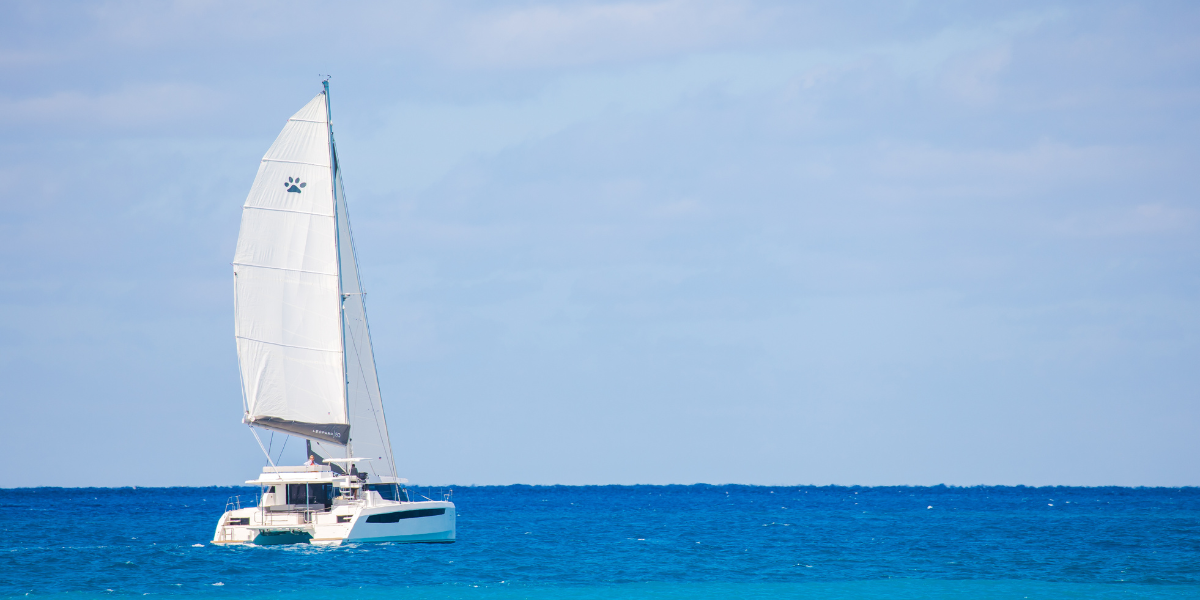
Hurricane Season
"Hurricanes can show up any time of year," says Parker. "But they're most likely to form during hurricane season than at other times of the year. In the Eastern Caribbean, the risk increases significantly in mid-August, with the highest risks from mid-August to mid-October. You don't want to be in the Caribbean or underway then."
Late October and early November provide a window between the winding down of hurricane season and the spinning up of the frequency and intensity of the ugly winter weather systems off the U.S. east coast.
Though an early spring departure may look attractive, most cruisers avoid this window because they'd be arriving in the Caribbean at the start of the hurricane season for the hottest and rainiest part of the year. Most insurance companies won't cover hurricane losses in the Caribbean from June through October.
Weather Windows
You never want to leave shore knowing you're headed into terrible conditions. A short-term forecast can help you with the when-to-go decision, but it won't guide you on how to sail around the larger weather patterns that develop offshore.
"You can't know detailed weather two weeks out,” Parker says. “But you can see rough patterns for the best places to sail. With experience and skill, a good weather router can look at the same information as anyone else but draw better conclusions for a passage plan."
The North Atlantic late-season weather is a series of strong cold fronts that get more frequent and intense into fall. Leaving from points north, it may take a fast boat two days to get to the far edge of the Gulf Stream. But the window between gales that far north is 24-36 hours, which is much too tight for slower boats to avoid the gales.
Heading south, the frequency between gales slows, and the Gulf Stream gets closer. Beaufort, SC, is only about fifteen hours of sailing to cross the Gulf Stream - plenty of time to slip between near-shore gales.
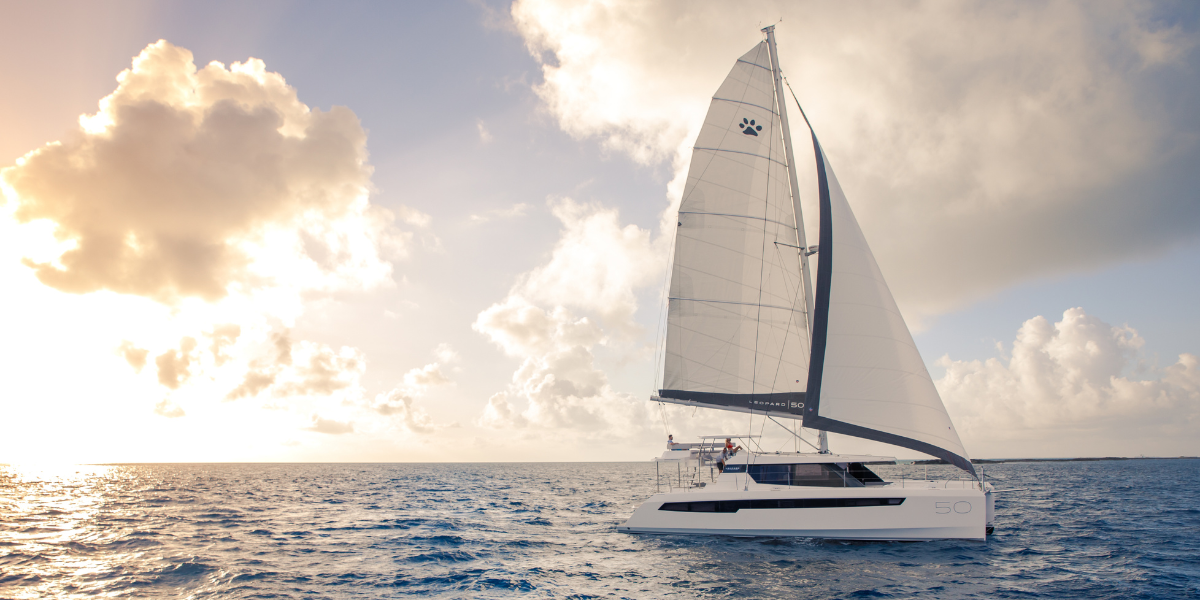
Gulf Stream Crossing
No matter where you depart, you'll have to cross the Gulf Stream. This rapidly moving current flows north to northeast and has an average speed of 3.5 knots. It's faster in the south and in the middle and slows towards the edges and as it flows north. The Gulf Stream has its own weather system and can be quite dangerous.
Sailing into the current is slow, so plan to cross the Gulf Stream at a right angle in the shortest route possible. Check forecasts for conditions and location of the stream as it moves and changes.
"Stay away from Northerlies in the Gulf Stream," says Parker. "Or from wind forward of the beam." Wind against the current can build into nasty, steep waves. Heading into the teeth of the current in those conditions will expose you to many hours of pounding.
Joining a Rally
Every year, the Salty Dawgs and the World Cruising Club sponsor rallies to the BVIs from Hampton, Virginia. If you join a rally, you may sail in company with anywhere from twenty to over one hundred boats. Rallies offer daily radio check-ins for safety, weather routing and daily updates from pros like Chris Parker, safety inspections, seminars, knowledge sharing, and social functions before and after sailing. If you have serious trouble offshore, there are other boats near enough to help.
If you're an experienced offshore sailor, you can go it alone. But for your first long passage, cruising in good company has a lot to offer. And rallies are great places to add extra crew if you want it.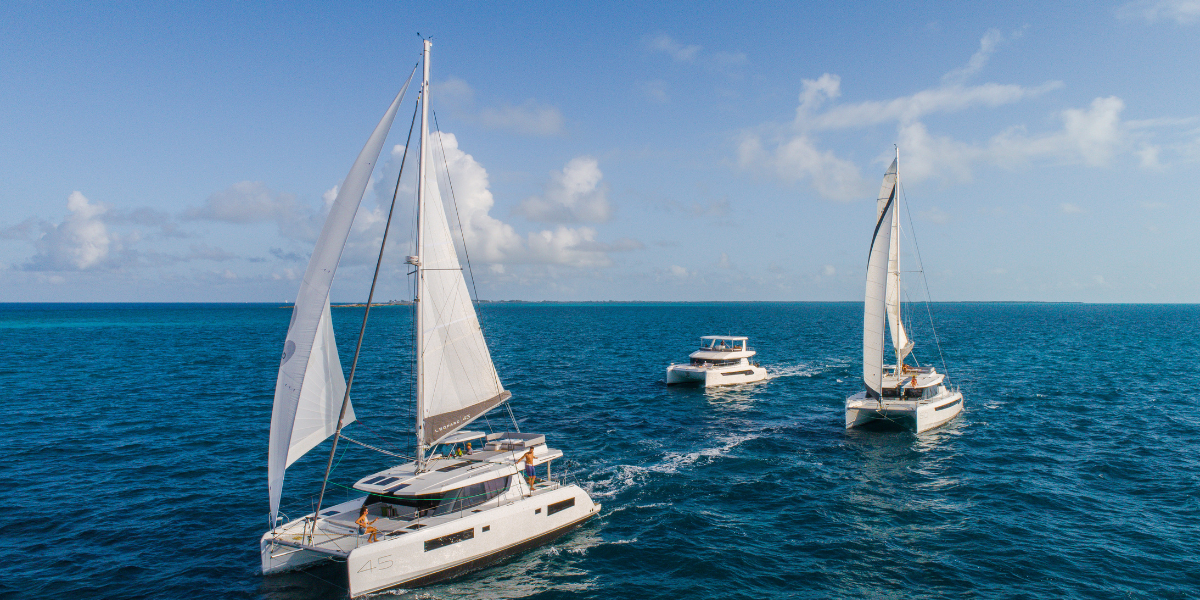
Preparing Your Boat
Heading offshore isn’t something you do without planning and preparation. Nothing can be overlooked, from spares and safety gear to the boat's condition and your own skill set. You're planning for possibilities and eventualities to give yourself more options to handle the weather, breakdowns and other problems.
1. Safety Gear and Equipment
One enormous advantage the rallies offer is equipment guidance. Some have safety inspections and required equipment lists, and others have extensive lists of recommended gear and experienced skippers to help you select and set it up.
Headed offshore, some of the equipment you'll need:
- A life raft with space for your whole crew.
- Offshore communications - a satellite phone and data, single sideband radio (SSB), or both.
- A registered EPIRB.
- An extensive first aid kit.
- Tethers, jack lines, harnesses, PFDs, foul weather gear and other personal protection.
- Plugs near through-hulls and multiple functioning bilge pumps.
This list is just the beginning.
2. Spares and Backups
Though you can get spare parts in the Caribbean, they're usually expensive and may take time. And they'll do you no good if you're five days into an offshore passage. You need your engines and critical systems running, so have a plan to deal with breakdowns.
On a catamaran, you have a second engine. But limping hundreds of miles on one engine because you lack a consumable spare like a fuel filter or impeller can be avoided with some forethought. Have at least one spare consumable for each engine; more is better.
Water makers, engines, and other complex systems usually have "offshore spare kits" available from dealers. Put together a rigging bag with spare shackles, sail repair tools, spare lines, and other critical rig parts. Most of these parts have no expiration date and will serve you well the whole time you own your boat, so gear up with spares correctly from the start.
3. Provisions, Supplies and Clothing
You’ll be offshore for a week or more, and you'll need food, fuel, and water for at least half again the estimated duration of your trip. With a water maker, you've got the flexibility to carry less but keep those tanks topped up during the early stages of the trip in case you can't make water.
Your meal choices should tend towards simplicity, with one-pan meals and foods you can partially cook in advance and assemble. Even with the stable catamaran galley, if you hit severe conditions, you may not feel up for complex cooking or big cleanups.
The first leg of your trip is going to be cold, so you'll need a few layers of warm clothing to go under your foul-weather gear. Even mild days offshore get cold at night. As you cross the Gulf Stream and get into warmer latitudes, the layers come off, so pack a range of clothing.
Making the Best of Your Trip
The passage to the BVIs can be challenging. But it’s so worth it. At some point, you'll notice you're wearing shorts and a light t-shirt. The foulies and base layers seem to evaporate off as you head south. The sun is shining, there's spray off the bows in a brisk breeze, and the deep cobalt offshore water brings a certain something as it surrounds you. It's a great trip and a fantastic experience.
Make sure you plan to have some fun out there, too.
